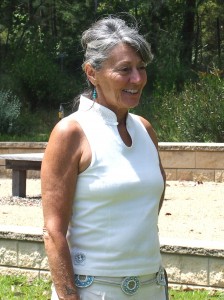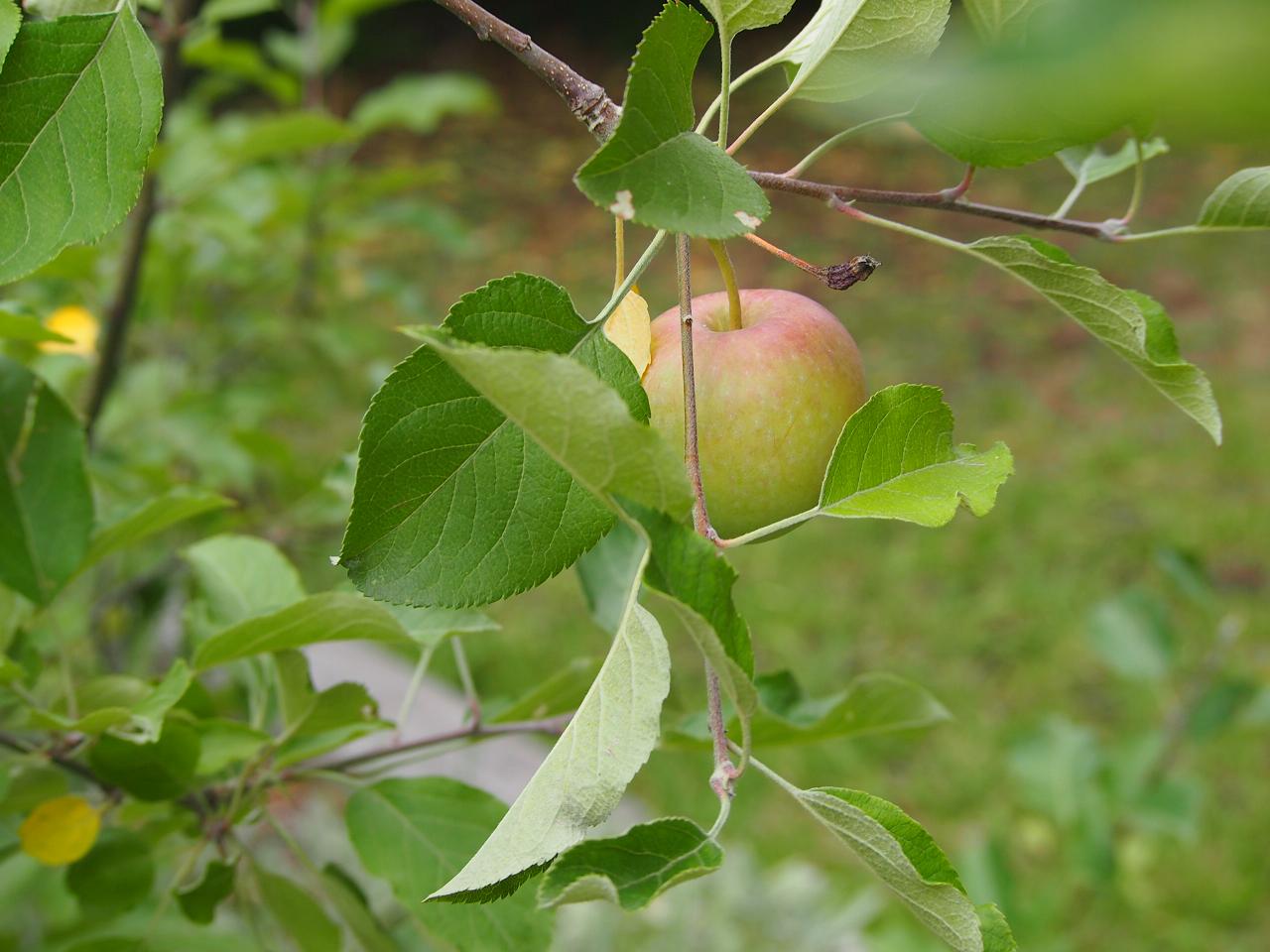Developing a more personal and intuitive connection with the earth, and in particular with our own little patch of land, can be a valuable aspect of learning to live more sustainably. Whether your brand of sustainable living involves turning your backyard into a permaculture food forest or buying food grown locally by someone else, you will gradually learn what grows well in your region and when. But sustainable living is about more than food, and a sustainable lifestyle can connect us to the land in other ways also.
Over the coming months Sustainable Suburbia will be publishing a series of interviews with individuals striving to live more and more sustainably, and I expect this connection will be a central theme of many of them. To begin the series though, is something a little different.
At sixty, Grace Geiger would probably not categorise her life as particularly suburban, although recently she has been living in suburban Cairns, and spent two months living in the Digger Street Arts Community: “a living example of how sustainability can be achieved in an urban setting”. The Arts Community is an urban space in North Cairns made up of four properties and including permaculture gardens, while providing a space for artists of all kinds to live and show-case their work.
But living sustainably and being connected to the land have both been important to Grace for much of her adult life. Following is the story of her adoption into an Aboriginal tribe in far North Queensland, and how it gave her a connection to place she had never had.
Daintree Dreaming

When my then ten-month-old son met his Aunt Grace, he was in love with her in minutes, engaged by her broad grin and willingness to get right down to his level. Nine years later, his baby sister had the same reaction.
Grace Geiger is always like this. An American born white Australian and my sister-in-law, she is energetic, with a generous smile and a willingness to jump into life’s next challenge. Thirteen years ago that willingness meant packing up a successful healing practice and moving across the country, on the strength of a few dreams and some feelings.

‘I’ve always been more of a feeler than a thinker,’ Grace told me.
She left Perth and drove to North Queensland for two reasons. First, she had spent six months having dreams about Ulysses butterflies and feeling drawn to the planet Venus, in the North East. Then, she developed a longing to go into the desert and sit with the Aboriginal grandmothers. “There was nothing rational about it,” she told me. “It was just those feelings, and the sense that it was time to start a new life.”
With a father in the United States Navy, Grace grew up all over America. She eventually moved to Australia following her mother’s second marriage to another navy bloke—this time an Aussie. By that time she was sixteen years old and wanderlust had already set in. Since moving to Australia she has lived in various parts of NSW, Queensland, and Western Australia, as well as living for a time in Thailand and nearly a year back in the States.
Maybe that’s partly why it was such an important experience for her to find a place to belong. Perhaps spending so much of her life in motion has allowed Grace to see clearly the disconnection from the land that has become such an issue in recent decades, since what Paul Gilding terms “the beginning of modern environmental awareness”, when “people on a large scale started to wake up to the fact that there were limits to the earth’s capacity to cope with our abuse” (The Great Disruption, p.3).
When she told me about being adopted into an Aboriginal family, Grace spoke a lot about this connection to the land. “It meant I had a place where my spiritual umbilical cord went into the planet,” she said. “A place where I belonged; a place that I was responsible for; a place that I listened to the dictates of, that I serve.”
She also spoke of about Polly, her adoptive mother, emotion making her voice crack. When she first met Polly, the female custodian of Buru—the genesis site of the whole Kuku Yalangi nation and a breeding ground for Ulysses butterflies—both women were crying within minutes.
“You’re the strong voice I’ve been praying for,” Polly said to her.
“I’ve been praying for you too,” Grace replied, “but I thought I’d meet you in the desert.”
Listening to Grace talk about the time she spent in far North Queensland, living in the rainforest with her adoptive indigenous family, I was struck by the intensity of her feelings. She told me of the joy of living connected to the land. But also of the conditions in which her adoptive mother, Polly, was living. Then in her early seventies, she had holes in both the ceiling and walls of her house; a fireplace and stove made from half a 40 gallon drum with a grate over it. Her dirt floor was breeding ground for fleas.
Grace explained that there had been difficulty in receiving Government grant money allocated for building houses for the elders at Buru, because they did not have an approved administrative body. However, there was some progress. By the time I first interviewed Grace, five years after she first moved to Queensland, Polly had a timber floor beneath her feet and a lockable house with a roof that didn’t leak.
“She will not leave the land under any circumstances,” Grace told me then. “It is her duty to stay with it day and night.” Legally Polly was a squatter. Her community’s land claim had been tied up in the courts since 1996. They had been advised by authorities to go ahead and use the land, that it was only a matter of time before the claim would go through, but Grace could not tell me what was holding it up. Happily, their claim did eventually go through, and they became custodians of the Gidja National Park, where all their story sites are, in early 2008. Later they were granted freehold ownership of the land. Polly died in the Spring of 2009.
For a born and bred American to become a member of an Aboriginal Australian tribe is somewhat odd on the face of it. But speaking to Grace about both experiences makes the combination seem more natural than you might first suppose. Her American accent has softened dramatically over the past few decades, but when I ask her whether being American has an impact on her experience with her Aboriginal family she nods emphatically.
“Oh definitely,” she says, adding that although she has been naturalised, as an American she can interact with indigenous Australians without the guilt and baggage that is brought to such an interaction by most white Australians.
Nonetheless, when Polly first adopted Grace, not everyone was pleased. A number of people would not speak her name for the first three months she was there. “They needed to see me live among them and walk my talk,” Grace said.
Three years after she left Perth, Grace’s daughter fell sick, and Grace flew back to be with her. She arrived with a powerful desire to talk about her experiences at Buru.
“It is time that we as the new Australians on this continent begin to listen to what the Aboriginal people are saying, because we need to hear what they know,” she said in a radio interview three months after her return.

“A tree to [my Aboriginal family] is not just a beautiful tree. It’s not just a beautiful river, it’s not just a nice rock. They’re part of these things, they resonate with this. They are part of it and it is part of them. And this is what I feel is resonating very clearly and strongly for me coming back to the city, that this is something we all need to feel inside ourselves, to really gain a sense of wholeness and belonging and purpose and balance.”

When Grace first arrived back in Perth she had trouble with simple things like crossing roads and saying no. Her senses were not attuned to the city sounds and sites. “My whole sense of perception was geared towards gathering, hunting and listening to the dictates of the land,” she explained. Instead of remembering to look both ways before crossing the road, her attention was drawn to the seeds on a tree—could they be edible? Instead of noticing the cars blaring their horns she noticed the change in the wind—was the tide changing? And what did that birdcall mean?
Even communicating with people was different. “It’s a very different, direct style of communication we [westerners] have,” she said. As an example of this Grace explained that her Aboriginal family have no word in their language for ‘no’, and that to place someone in a position where they have to say no is considered socially inappropriate and quite rude.
“So you can appreciate how awkward that was for me coming back to the city,” She said. “I was constantly being bombarded by people and I couldn’t say no!” She felt that learning to say no again was probably the hardest part of her re-assimilation.
“It gave me an incredibly poignant understanding of the complexity for Aboriginal people attempting to find their way into modern western lifestyle,” she said.
Although I met with Grace in the comfort of suburban Canberra, it is easy to imagine her living joyfully with the rainforest. Her wiry frame and sun-darkened skin are witness to time spent outdoors. Years of yoga and meditation prepared her well for the constant awareness the rainforest requires. The Daintree, she says, demands your attention, each time you leave the camp. This is no place for quiet strolls spent lost in thought. In the Daintree human beings are not the top of the food chain.
“I will always belong to Buru and the Daintree, the Kuku Yalangi Tribe. Through them I am becoming a part of a greater ‘Dreaming’ as are they. I now work for all Aboriginal people and for mother earth, wherever I am.”





